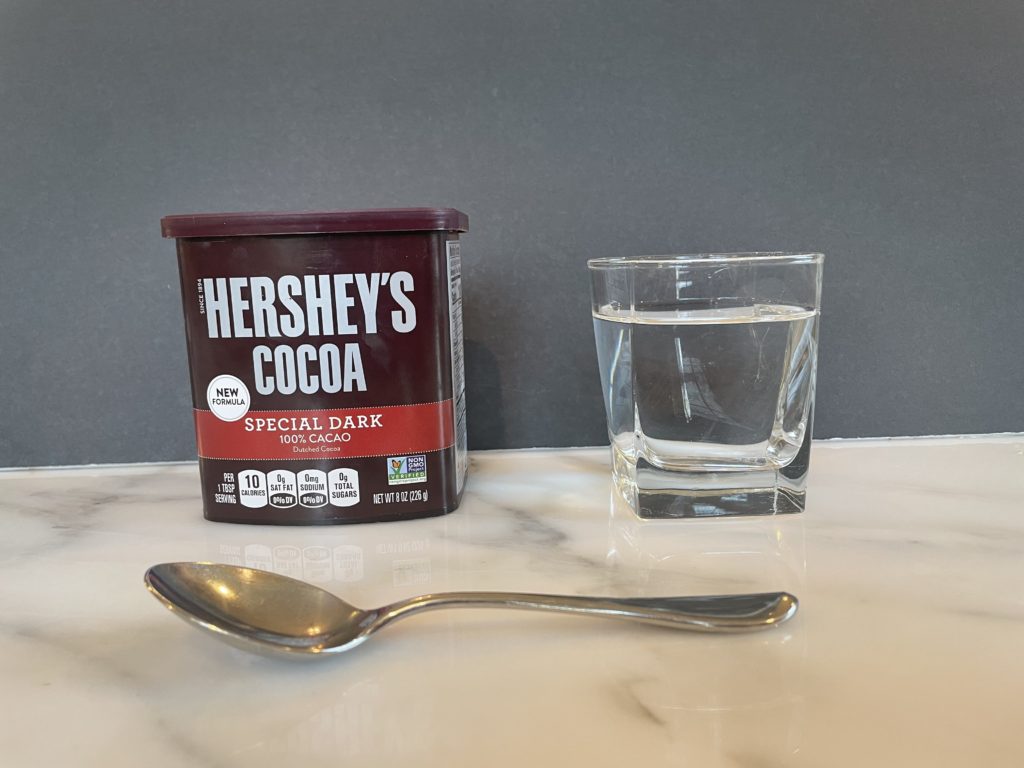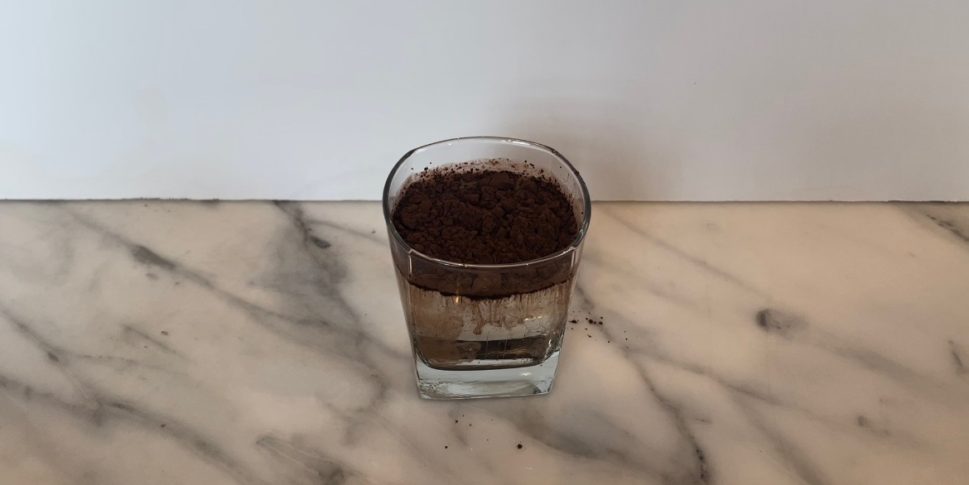I love chocolate. To me, chocolate is so delicious that it must be magical. And today, we’re going to explore some physical properties of chocolate that seem almost magical! So, for all you chocolate lovers out there, today we are going to create floating chocolate. This short but fun experiment is perfect for a day when you only have a few minutes. It only has one step!
What you need:
- Cocoa Powder
- A cup of water
- A spoon

Step:
- Slowly pour some of the cocoa powder onto the surface of the water in the cup. Observe how the powder initially sits on top of the water, then slowly begins to flow down and mix into the water.
Why does the cocoa powder float in water?
Cocoa powder is hydrophobic, which means it does not mix with water. When we pour the cocoa powder into the glass, the molecules of the powder are repelled away from the water, thus the cocoa powder remains on the surface. However, gravity is also acting on the cocoa powder. Gravity pulls the cocoa powder down into the water. Thus, the areas where the cocoa powder tends to start mixing into the water first are the areas with large clumps of cocoa powder that have a larger gravitational force acting on them. However, despite the appearance that the cocoa powder is mixed into the water, it is not. Small molecules of the powder are simply dispersed throughout the water, giving the appearance that the powder has completely dissolved into the water. When you mix cocoa powder into a glass of water or milk to make hot chocolate, you are not dissolving the chocolate into the water/milk; you are actually just suspending the molecules of cocoa powder in the drink!
